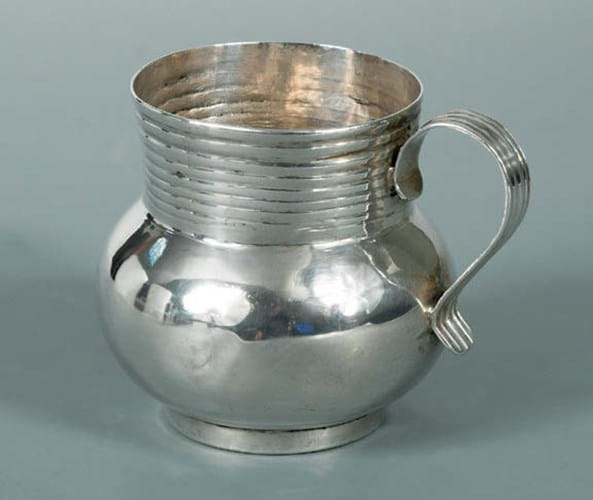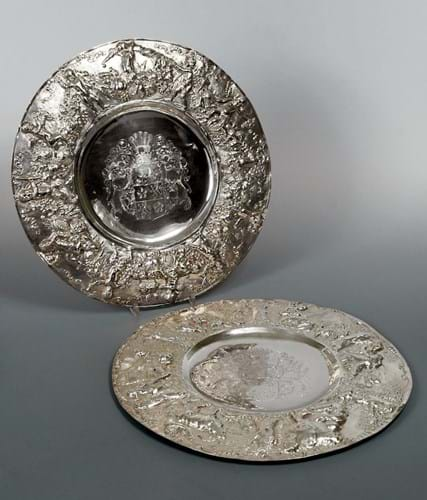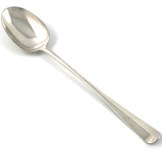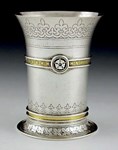
The 40 lots were on the market for the first time from Lord Hastings’ former home, the Grade I-listed Melton Constable Hall built on Astley family lands in the parish of Melton Constable, Norfolk.
It was quite possible that a very rare 3½in (9cm) Charles II silver child’s mug with Norwich hallmarks had not left Norfolk since it was made over three centuries ago.
The baluster form with reeded decoration to the rim and the scroll handle is rare (one better known in stoneware and delft than in metalwork) and it ranks among only 50 or so pieces of Norwich domestic silver hollowware now extant.
This mug probably dated from c.1680 although (as between 1642-88 Norwich assay office scrapped the date letter cycle) it had only the city symbol and the double strike of Thomas Havers (fl. c.1674-1732). It crossed the border to Cambridgeshire for a sale where it was given a £2000-4000 estimate but sold at £6500.
Charles II sideboard dishes
Prices for some of the larger domestic pieces were more restrained. A pair of Charles II silver sideboard dishes found a buyer within a conservative estimate of £8000-12,000.
Dated 1661 – the year after the Restoration and five years before the Great Fire of London – they carry the (untraced) maker’s mark of WM with a pellet.
Each 18in (41cm) diameter dish was lavishly decorated to deep borders with repoussé pastoral scenes and engraved to the centres with large (later) coats of arms. The hammer price was £11,000.
Also in the Hastings collection was a set of three William and Mary silver gilt tazza – one 11in (28cm) across plus a smaller pair – that were struck for London, 1694. Each with gadrooned rims and a large and superbly engraved crest, they were probably made by William Denny, although the maker’s marks were rubbed. They sold at £8000.
Craddock & Reid salts

One of a set of four salts by Craddock & Reid, £12,000 at Cheffins.
Sold at £12,000 against an estimate of £1000- 2000 was a set of four George III silver standing salts with spoons by Joseph Craddock & William Ker Reid. The salts (with date letters for 1818) are designed as scallop shells raised on the back of tortoises with the gilded spoons (1819) made to match with shell bowls and mermaid terminals.
A pair of George IV 88oz oval sauce tureens by Edward Farrell (London 1821), decorated with cut card foliate and scroll decoration around two applied crests, made £5500.
From a different source was a scarce example of provincial silver: a fiddle pattern soup ladle with Exeter marks.
Another of the ancient English provincial assay offices now long closed, the Exeter office officially operated between 1701-1883 although records of gold and silversmiths in the town go back as far as 1570.
A set of Exeter silver fiddle pattern teaspoons from the first half of the 19th century is not worth a great deal more than £80-120 – but what price an Exeter silver soup ladle of the same period?
The example offered at Cheffins marked for John Stone, Exeter, 1839, sold at a multi-estimate sum and unorthodox hammer price of £3056.















